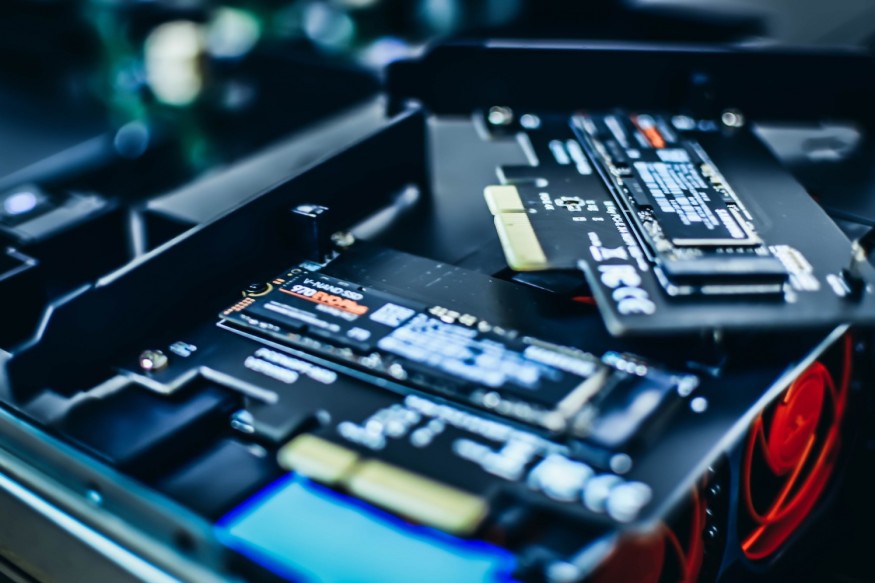
Data storage is a somewhat overlooked aspect of recent advancements in computing technology as it tends to take a back seat to innovations in other areas.
The breakthroughs in storage technology have nevertheless been quite revolutionary in the past few decades. NAND flash memory in particular has both figuratively and literally transformed the way we store and access data.
Background: A Radical Departure from Hard Drives
Conventional hard disk drives have been around since the 1950s. Although storage capacities and performance have increased dramatically over the years, their fundamental features remain the same:data is stored on mechanically spinning platters paired with magnetic heads that read or write data to the disks.
By contrast, flash memory has no moving parts at all, as implied by the name solid state drives (SSDs). Here, data is stored in memory cells made up of floating-gate transistors, which hold binary values assigned via electrical charges isolated at different states.
The NAND type of flash memory, named after the Boolean logic operator "NOT AND,"wasintroduced in 1987 by Toshiba Memory (now known as Kioxia). Iteventually became the dominant solid state storage technology due to its density and scaling advantages compared to the other main type NOR (also a logic gate).
From Niche Case to Ubiquity
Although NAND flash turned out to be faster and more cost-effective to produce than the alternatives, the first iterations were still quite slow and expensive. In the early days, it was mainly used in USB drives, memory cards or as onboard storage for devices like digital cameras and MP3 players. Capacity was numbered in the megabytes, corresponding to a few dozen digital images or songs at best.
Today's NAND flash memory devices can easily reach into the multiples of terabytes worth of storage capacity - as in millions of times more data compared to early memory cards.Performance has also improved substantially, with read/write speeds presently reaching above 10 GB/s in the fastest devices.
And importantly, as the demand for storage has increased, the cost per unit of storage has decreased at the same pace.
As a result, flash memory can now be found in practically every device that requires fast non-volatile memory, including everything from consumer smartphones and high-end PCs to the data centers powering cloud computing and big data analytics.
Looking Forward: Possibilities and Challenges
Thanks to rapid advancements in density and performance - all while lowering the production cost per bit - the future of NAND flash memory lookspromising, although not without challenges.
Towards Saturating the PCI-Express 5.0 Interface
The ability of NAND-based SSDs to saturate the exponentially increasing bandwidth of thePCI-Express (PCIe) interface is an interesting proxy for how quickly the technology is developing. It is particularly evident in the price-sensitive consumer market that NAND flash memory and its associated controller circuitry is doing a god job of keeping up.
Since moving away from the bandwidth-limited Serial-ATA interface to PCIe and the NVMe storage protocol, performance increased by a factor of 10 in about as many years. Both the PCIe 3.0 and 4.0 interfaces were rapidly saturated by the fastest SSDs.
With version 5.0 of the interface just now being adopted by manufacturers, we are already seeing NAND solid state drives with sequential transfer rates above 10,000 MB/s.
The Ongoing Challenge of High Densities Vs Endurance
But although performance keeps improving and the cost per bit is down significantly, other challenges remain.A key issue with flash memory isthat thecycle life of memory cells and susceptibility to data corruption paradoxically increase at higher densities.
In its earliest incarnations, NAND flash memory cells were designed to store a single bit (SLC). Subsequent improvements in manufacturing allowed for storing two bits per cell (MLC), three bits (TLC) and lately four bits per cell (QLC).
While improving manufacturing costs, additional memory cell levels reduce the amount of program-erase (P/E) cycles they can withstand before wearing out. Newer NAND-based solid state drives are therefore prone to expire faster than older types, which is something of a paradox.
This is not a major concern for consumers, who are unlikely to ever exceed the NAND's endurance rating during the lifetime of their devices. For always-on, heavy-duty servers, longevity is however a very important aspect that will continue to be a challenge for SSD manufacturers.
Best is Yet to Come?
The impact of NAND flash memory on the technology industry in general has been profound. It has allowed for the development of smaller, more powerful devices that can store and accessvast amounts of data almost instantaneously. Performance is set to improve further in a relatively near future, as PCIe 6.0 is already on the horizon.
Additionally, thanks to theincreasingly cost-effective manufacturing processes, NAND-based storage keeps replacing traditional hard disk drives at a rapid pace, thus completely rearranging the storage industry landscape.
And as the demand for storage continues to increase, NAND flash memory is expected to play an even more significant role in the technology industry going forward.
© 2025 ScienceTimes.com All rights reserved. Do not reproduce without permission. The window to the world of Science Times.












